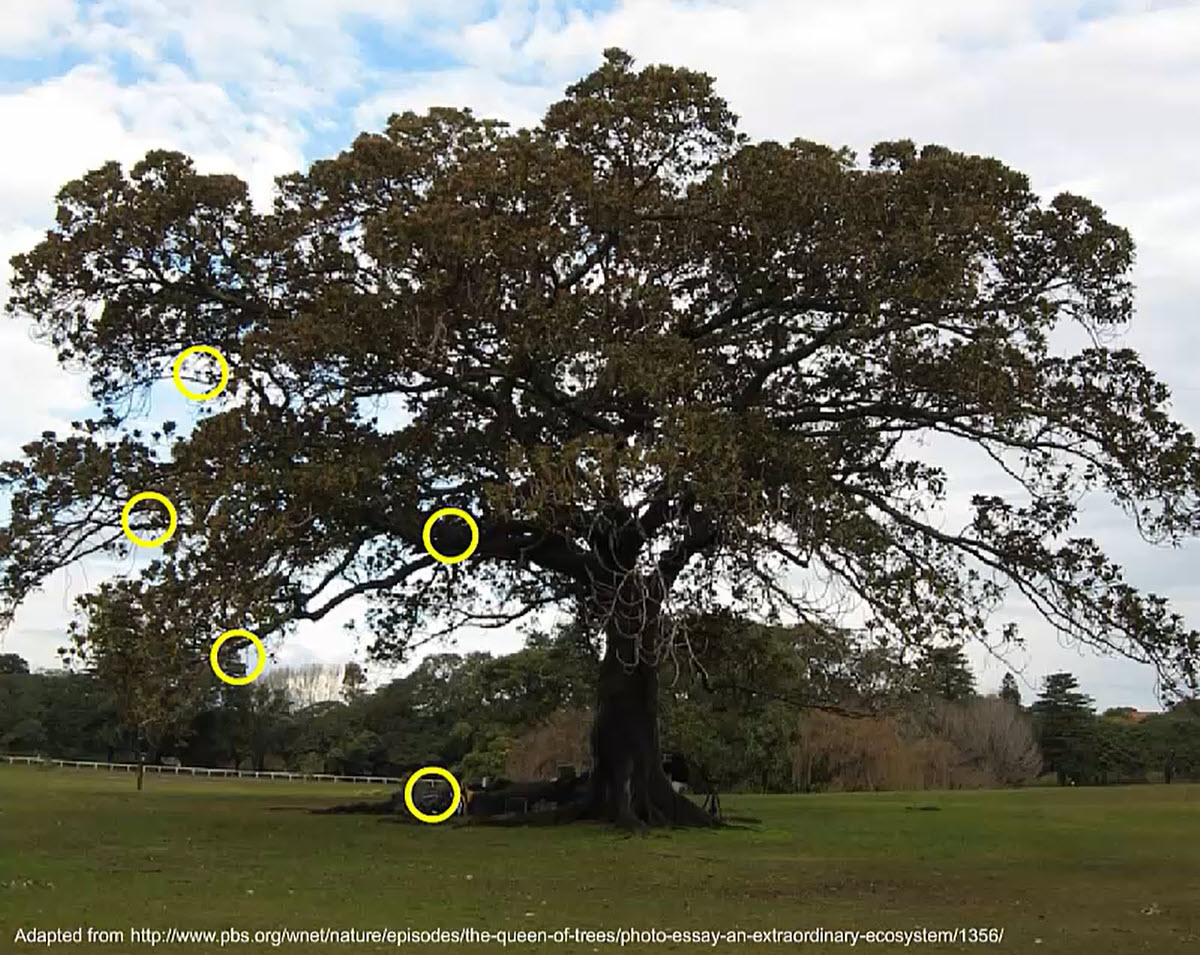Ecology: Introduction
 "When one tugs at a single thing in nature, he finds it attached to the rest of the world."
"When one tugs at a single thing in nature, he finds it attached to the rest of the world."— John Muir

Have you ever looked really closely at a tree? So closely that you found it to be something other than just a lone tree you can lean your back against on a warm summer day? If you looked really closely at that tree, you might be surprised to find a whole community living there! Take a look at all the living things in this tree.
This tree is more than just an individual living organism. It is a home to countless other organisms – plants and animals. Energy and matter come together, cycling throughout this tree and interacting with the atmosphere, the geosphere, and the hydrosphere in a complex system. If you think about it, any individual living organism is connected to a whole system by hundreds of ties. This is the idea of an ecosystem, an idea we're going to explore in depth.
Click the image below.
Text Version
 Lesson 3 Objectives
Lesson 3 Objectives
After you have completed this lesson, you will be able to:
- Define ecology.
- Explain the roles that organisms, communities, and populations play in the functioning of an ecosystem.
- Explain the flow of energy through an ecosystem using the laws of thermodynamics, food webs, food chains, and eco-pyramids.
- Explain the process of ecological succession in ecosystems.
Warm-up: Poverty and Environmental Degradation

When was the last time you went to the mall or went shopping for a CD? If you have gone recently, take a moment and think about all that was surrounding you. Was the building heated because it was cold outside? Were there trees lining the streets, or perhaps a garden maintained by the mall? How about wildlife? (Yes, at the mall!) Did you see squirrels begging for food or birds trapped inside? Now this might not seem like the most “natural” place to look at science, but science is all around us. We can observe and see nature even in the most unnatural of places.
 The earth is what we all have in common.” – Wendell Barry
The earth is what we all have in common.” – Wendell Barry
The study of how organisms, including humans, interact with their environment is known as ecology. It is the study of both living and non-living things, such as animals, plants, soil, water, the sun, and other forms of matter. It is a study of connections in nature. What does your "mall" ecosystem look like? Is it really connected to nature?
There are many types of animals and plants that we see even in the most populous of places, including squirrels, robins, chickadees, and many other animals, including ourselves. Common plants could include types of oaks, maples, pines and willows.
Although often placed there for landscape, there are many rocks and concrete or cement paths. We cannot of course forget the buildings, cars, and other non-living things that can be found at the mall.

